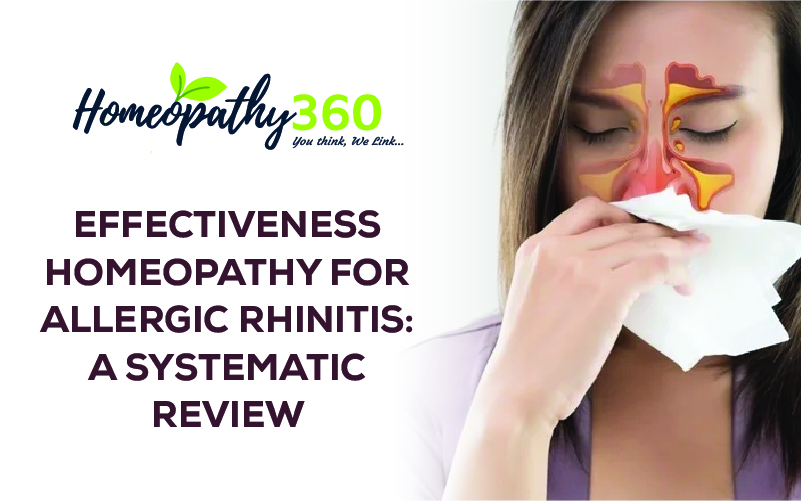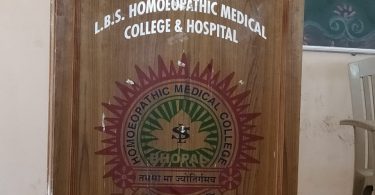
Abstract–
Allergy can be either due to genetic predisposition or external agents.
When it is due to genetic predisposition, then it is called as atopy. Allergies like eczema, asthma and hay fever are seen to be familial. Atopy has now become common but its reason is not identified.
Allergy is due to increased or change in response of immune system to external agents.
Conditions like eczema, allergic asthma, urticaria, hay fever and perennial rhinitis are due to external agent or “allergen”. Pollen from trees and grasses, house dust mites, cats, dogs, milk and eggs are most common allergens.
Key words–
allergic rhinitis, allergies, atopy, hay fever, allergen oversensitivity1,2.
Abbreviations- IgE –Immunoglobulin E , PGD2 –Prostaglandin D2 , AR – Allergic rhinitis1,2.
Introduction–
Allergic rhinitis is characterized by frequent sneezing , nasal fluid secretions, nasal passages obstruction, conjunctival, pharyngeal, nasal itching and lacrimation ,all these symptoms occurring in a temporal relationship to exposure of allergen. Allergic rhinitis is commonly seasonal due to elicitation by airborne pollens, it can also be perennial due to chronic exposure. Allergic rhinitis is the commonest clinical manifestation of atopic disorders1,2.
Other possible contributing factors include increased pollution in the atmosphere and the use of chemicals in food, medicine and household products. This state of allergy shows a strong familial predisposition and individuals with this allergic or atopic syndrome may present in early life with infantile eczema and later develop allergic rhinitis, asthma and allergies to a variety of food stuff. It is more common in metropolitan areas compared to rural areas. This is because of increased pollution due to rapid urbanisation and industrialisation1,2.
Allergic rhinitis symptoms result in sleep disturbance, fatigue, depressed mood and cognitive function compromise that impairs quality of life and productivity1,2,6.
The sum total of the individual characteristics in the 3 planes – emotional, intellectual and physical – depicts the constitution. This sum total is the resultant of the early environmental factors, right from the time of conception, acting on the hereditary plan of organisation as determined the genes. Therefore individual illness cured if only we can clearly understand the constitution3,4,5.
Complete restoration of health both mental and physical ways and that to permanently in mild and gentle way is the motto of homoeopathy. According to homoeopathy, all individuals are different and need different medicines for their particular situation so many homoeopathic medicines effective to give relief in allergic rhinitis3,4,5.
Aetiology –
Allergic rhinitis generally occurs in atopic individuals who have family history of a similar or related symptom complex and a personal history of collateral allergy presented as eczematous dermatitis, urticaria,asthma1,2.
A relatively small number of weeds that depend on wind rather than insects for cross-pollination, as well as grasses and some trees, produce sufficient quantities of pollen suitable for large distribution by air to elicit seasonal allergic rhinitis. Perennial allergic rhinitis occurs due to allergens that are present during the year, including desquamating epithelium in animal dander, cockroach-derived proteins, mold spores, or dust, which has mites.Nasal allergens are pollen, House dust, insecticides, animal dander, moulds found on decaying vegetables, feathers, face powders, cockroach, house fly and butterfly1,2.
Pathophysiology –
The starting event occurs between intraepithelial mast cells and the allergen, which later proceeds to involve deeper perivenular mast cells, both of which are sensitized with specific IgE. Biopsy specimens of nasal mucosa during seasonal rhinitis show submucosal edema with infiltration by eosinophils, along with some basophiles and neutrophils1,2.
In sensitive individuals, the first appearance of allergenic agent into the nose is presented with sneezing, stuffiness and discharge. The secreted fluid contains histamine, PGD2, and leukotrienes. reactions that are capable of producing tissue edema and eosinophilic infiltration1,2.
Clinical features –
Moderate to severe inflammation of serous & mucous membrane.Nasal mucosa is pale and boggy.Conjunctiva is congested & edematous. Frequent sneezing ,Nasal Stuffiness,Profuse watery nasal discharge, Obstruction of nasal passage, Conjunctival itching, Watering of the eyes. Burning & smarting pain in nose & eyes1,2.
Diagnosis –
1.The diagnosis of seasonal allergic rhinitis depends largely on an accurate history of occurrence coincident with the pollination of the offending weeds, grasses, or trees. 1,2.
2.The continuous character of perennial allergic rhinitis due to contamination of the home or place of work makes historic analysis difficult, but there may be variability in symptoms that can be related to exposure to animal dander, dust mite, cockroach allergens, fungal spores, or work-related allergens such as latex1,2.
3. Nasal secretions of allergic patients are abundant in eosinophils, and modest peripheral eosinophilia is a common feature. Local or systemic neutrophilia suggests infection1,2.
4.Total serum IgE is frequently increased1,2.
Prevention –
Avoidance of exposure to the known allergen is the most effective tool of controlling allergic diseases1,2.
Treatment –
Allergy is cured by improving the immune system and as a result symptoms subside on their own. Allergic diseases are the outer reflection of the internal problem. So, we need to increase the immunity of the patient and this can be strengthened by homoeopathic medicines. As Homoeopathy is a system of medicine which works on inspiring the humoral or the immune mechanism of the body from its latent or overt reaction, it is hence the best form of medicine to treat any allergy4.5.
Many homoeopathic medicines are available having potential to cure allergic rhinitis3,4,.5.
These include- 1] Aconitum napellus -Mind- Great fear, anxiety , worry, delirium. Stunning compression or crampiness at nasal root . Excessive sensitivity to smelling , mainly for unpleasant odours .Excessive sneezing. Coryza with catarrh, headache, buzzing in the ears and colic . Coryza due to cold , dry winds3,4,.5.
2] Pulsatilla nigricans–
Repeated attacks of coryza with sneezing and stuffing up of the nose , fever and sweating .Considerable watery discharge with sneezing in evening, morning stuffing up of the nose with thick yellow, green discharge. Pulsatilla nigricans is suitable to chronic Catarrh with bad smell. Associated with loss of smell & taste. Amelioration to open air. Aggravation in warm room3,4,5.
3] Staphysagria –
Nose ulcerated, with scabs located deep. Violent coryza, with one side obstruction of nose, frequent sneezing and lacrimation .Sneezing without coryza . Coryza , at first discharge of only thick mucus, later thin water.Obstruction of nasal fossa, with nasal tone to voice4,.5.
4] Hydrastis canadensis –
Hydrastis causes catarrh of almost all mucous surfaces i.e. nasal, pharyngeal, bronchial, duodenal, gastric, intestinal, urethral also vaginal .The characteristic catarrh is yellow or white, tough and stringy. 3,4,5.
Catarrhal symptoms are increased with harsh, dry winds and motion. Frequent discharge of thick white mucus, frontal headache. Coryza is watery, excoriating, burning, smarting with rawness in nose.Discharge is scanty indoor and profuse outdoors3,4,5.
5] Ranunculous bulbosus –
Nasal mucosa appears red, swollen, and inflammed, with extensive pain and many scabs inside. Obstruction of nose, especially indoors, with pain from excoriation .Copious discharge of viscid mucus from nose .Nasal bleeding ,internal tingling and upward pressure3,4,5.
6) Allium cepa –
Indications for this remedy include watery eyes and a clear nasal discharge that irritates the upper lip, along with sneezing and a tickling cough. The person usually is thirsty, and feels worse indoors and when rooms are warm, and better in fresh air3,4,5.
7) Arsenicum album:
A burning, watery, runny nose with a stuffy, tickling feeling during allergy attacks suggests a need for this remedy. Swelling below the eyes and a wheezy cough are common. The person may feel chilly, restless, anxious, and Also other remedies are useful like is often very tired3,4,5.
Also other remedies prove to be useful like Euphrasia , Ferrum phosphoricum , Gelsemium , Natrum muriaticum, Nux vomica , Sabadilla ,etc3,4,5.
Conclusion –
The homoeopathic constitutional medicine has a capacity to correct the tendencies and abnormal behaviours and reactions to the environment. Homoeopathic medicine stimulate the body’s own defence system to cope up with exposure to allergens, rather than suppressing the allergic symptoms. Often, treatment does not have to be taken continually – for example, a homoeopathic medicine taken before the start of the hay fever season can protect the patient throughout the whole season, reducing the need for anti-histamines. Many homoeopathic medicines are available having potential to cure allergic rhinitis.3,4,5.
References-
- Longo , Fauci , Kasper, Hauser, Jamson , Loscalzo. Harrison’s Principles of Internal Medicine: volume 2; 18thEdition. Mc Graw Hill Publication (P) Ltd.
- Kumar P, Clarke M. Kumar and Clarke’s Clinical Medicine: 6th Edition: Elsevier Saunders Publication (p) Ltd.p. no. 895
- Allen HC. Allen’s Keynotes, 10TH edition. New delhi , B.Jain Pub, p no. 5,148,250,292,255.
- Dubey S K. Text book of Materia Medica, 3rd edition 1998 , calcutta . Books and allied pub. , p no.8,205,329,335,378.
- Kent JT. ( 1997), Lectures on homoeopathic material medica ,reprint edition ,New Delhi : B.Jain Publisher (p)Ltd.p no. 23,579,861,945,875.
- Beattie N, Allergies , 2020 ,
Available from website www.britishhomoeopathic.org
About the author
Dr Vaishali Janardhan Ovandkar
MD Hom. Part II
Department of HMM
GMHMC,Shelgaon , Jalna-MH





